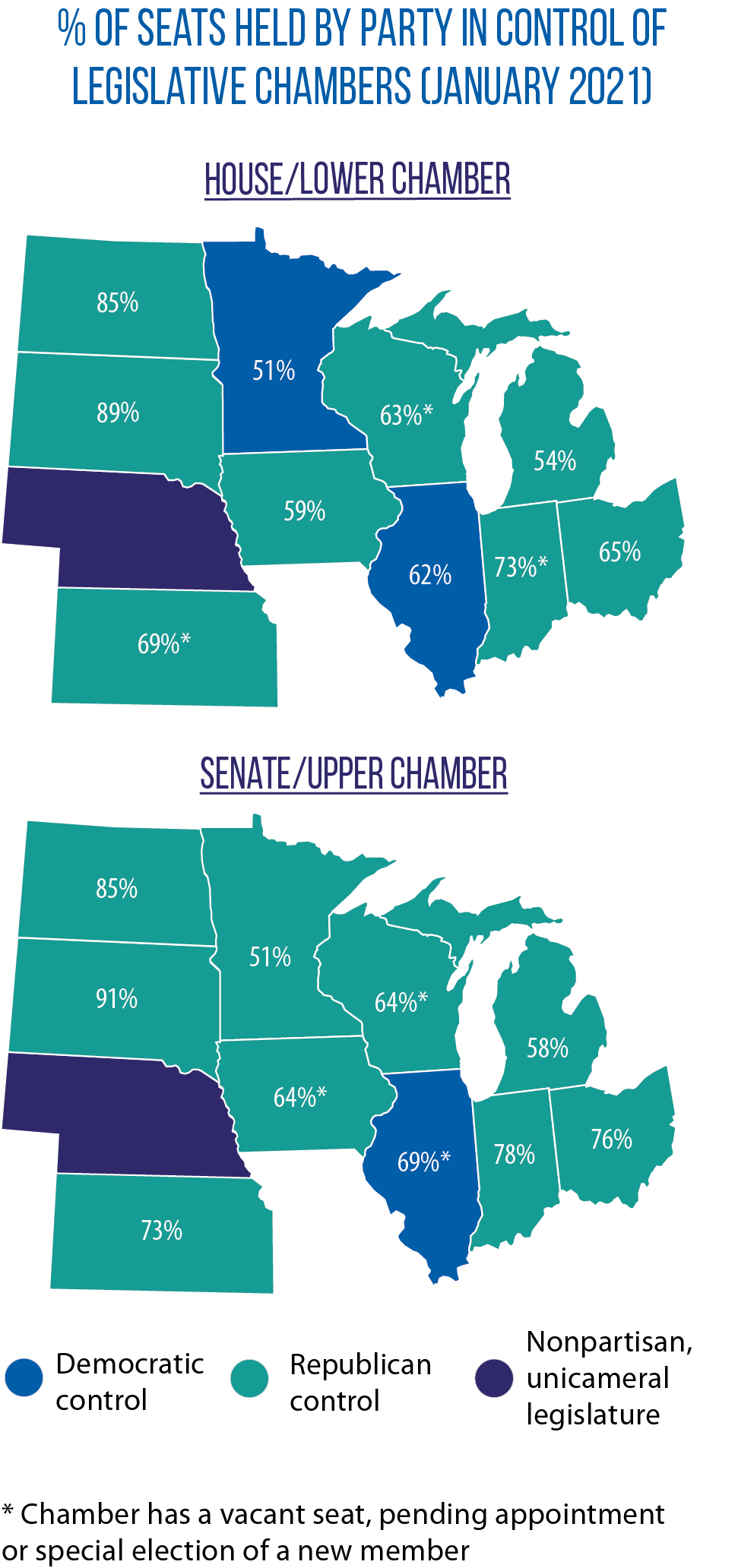Capital Closeup | Managing small party caucuses
Three's a crowd, the saying goes, except when it's a legislative caucus
Not much had changed across the Midwestern legislative landscape when the dust from November’s general election settled. No chamber changed political hands, but as the size of some majorities grew, the size of corresponding minorities suddenly stood out like a sore thumb.
Or, as South Dakota Sen. Red Dawn Foster says, like a “sore pinky.”
When the 35-member Senate began its 2021 session in January, Foster was the newly minted assistant minority leader for a Democratic caucus of three: herself, Minority Leader Troy Heinert and Minority Whip Reynold Nesiba.
Politics aside, that number presents a huge practical hurdle: with 13 standing committees in the Senate, the caucus doesn’t have enough members to attend them all.
Heinert says interns and volunteers are being relied upon to take notes in the committee meetings he, Nesiba and Foster can’t attend so they can discuss bills during caucus time. (South Dakota’s Legislature schedules set caucus times during which no committee meetings are held).
Nesiba adds that also means that, at some point, they’ll have to leave their assigned committee hearing.
“For me to go and push a bill I want to bring, if I have to leave the Appropriations Committee and then there’ll be no [Democrat] in that committee,” Nesiba says. “There’s going to be real challenges. I think it’s going to be harder than [the 2020 session], when we were five.”
Heinert says he’s asked the various committee chairs to let them place comments on the record regarding bills and to accommodate schedule quirks as they arise. Most have been understanding, he adds.
“That’s going to be the hard part — being in two places at once,” he says. “But I have faith in our members; we work well together, and maybe we’ll have to save arguments for floor debates. But we had to do that as a caucus of five.”
The South Dakota Senate was fairly evenly split as recently as 2009, with 20 Republicans and 14 Democrats. Republicans gained 10 seats in the 2010 election and Democrats have been in single digits since.
By percentage terms, South Dakota’s Senate Republican majority of 91 percent is the most lopsided among Midwestern legislatures, although North Dakota’s Republicans have majorities of 85 percent in both chambers and Indiana Senate Republicans occupy 78 percent of the chamber’s 50 seats (see maps for more).
The Saskatchewan Party controls 79 percent of the province’s 61-member unicameral Assembly, making it safe from “no confidence” votes that can bring down the government and force a new election.
Yet they’re not the most lopsided majority: Hawaii’s 25-seat Senate began its 2021 session with just one Republican (and one vacancy). Since 1992, that GOP caucus has fluctuated between five, from 2002 through 2006, to none sin 2017-18.
South Dakota Senate Majority Leader (and CSG’s 2021 Midwestern Legislative Conference chair) Gary Cammack says having a majority gives his caucus an extra responsibility to ensure the minority party’s voice isn’t ignored.
“Regardless of how small the representation is for the other party, it’s still worthwhile that their voice be heard,” he says.
Perhaps counterintuitively, Cammack adds the situation could take some of the politics out of cross-aisle conversation because the focus will fall now on the person rather than the party.
“On issues where you disagree, you can have a real one-to-one conversation and talk it out. A 50-50 situation would change those dynamics,” he says.
Capital Closeup is an ongoing series of articles focusing on institutional issues in state governments and legislatures.